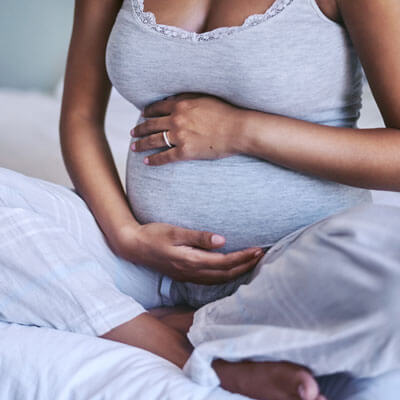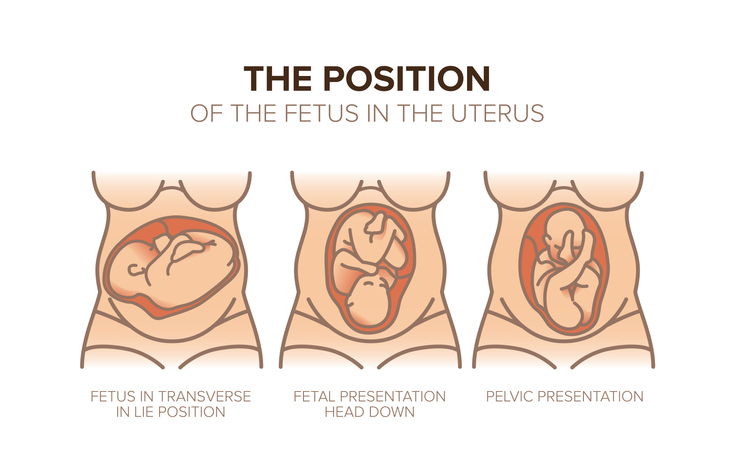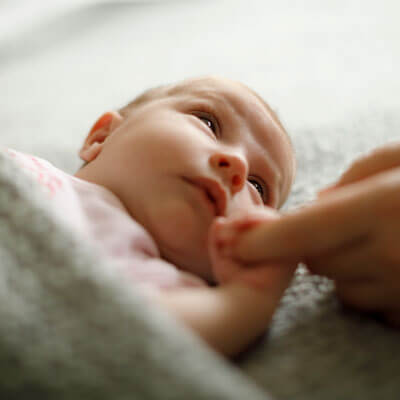Care in Pregnancy & Following Birth in Norwich
 We are experienced in helping mothers and babies with pregnancy and post birth issues. Pregnant mothers consult us for a number of reasons including neck pain, back pain, symphysis pubis dysfunction (SPD), pelvic girdle pain (PGP), sciatica and headaches to name a few. Some of these symptoms are related to pregnancy and some are not directly related but pregnancy reduces options for care e.g. medication or imaging can be contraindicated or dangerous.
We are experienced in helping mothers and babies with pregnancy and post birth issues. Pregnant mothers consult us for a number of reasons including neck pain, back pain, symphysis pubis dysfunction (SPD), pelvic girdle pain (PGP), sciatica and headaches to name a few. Some of these symptoms are related to pregnancy and some are not directly related but pregnancy reduces options for care e.g. medication or imaging can be contraindicated or dangerous.
Did You Know?
- Most pregnant women who consult us for SPD or PGP report a significant reduction in their pain, together with an improved ability to walk. This allows greater enjoyment of the last few weeks or months of pregnancy.
- Many continue to have further pregnancies without the return of symptoms.
Chiropractic Care is Safe and Effective in Pregnancy
Things to Consider in Pregnancy
One of the main anatomical features of pregnancy is the pelvis and its function. The pelvis is made up of three main bones, the sacrum and the two pelvic bones, resulting in two sacroiliac joints at the back and at the front the symphysis pubis (site of Symphysis Public Dysfunction – SPD).
On top of the sacrum are the spinal vertebra and L5 is connected to the pelvic bones by ligaments which means that the movement of the lower back and the pelvis are interrelated. When this good functioning relationship changes, then pain, stiffness or nerve irritation can occur.
The pelvis forms a boney structure, like a fruit bowl, in which the lower abdominal organs sit and are held in place by ligaments and endopelvic fascia sheets. These allow for expansion and some movement but hold each organ in place relative to the other.
Having an understanding of how the pelvis should work and what can go wrong allows us to understand where to look and how to get great results for expectant mothers.
Symphysis Public Dysfunction (SPD) and Pelvic Girdle Pain (PGP)
The symphysis pubis is a joint that connects the two pelvic bones together. Unlike other joints, such as the elbow or knee, the symphysis pubis (SP) is a fibrocartilaginous joint. These joints do not allow the bones to translate, one bone on the other, but act more like two bones attached by velcro – allowing torsional motion and ‘give’ within the joint. The forces placed on the symphysis pubis are directly relatable to the movement, health and loading of the sacroiliac joints (SIJ) at the back of the pelvis. As pregnancy develops, the stress on the pelvis and the lower back begins to change. This results in the loading on the sacroiliac joints and the symphysis pubis changing and as a result bearing more weight.
Symphysis Pubic Dysfunction (SPD) is when this movement and the ‘force loading’ changes, resulting in pain, stretching and in more severe cases, rupture. This pain is usually at the symphysis pubis but women also report discomfort in the groin, lower back, buttocks, along the sciatic distribution, anal or vaginal pain. These symptoms show us that SPD is actually a dysfunction of the pelvis as a whole and can affect any of the associated structures. As a result many people refer to these types of pelvic issues as Pelvic Girdle Pain (PGP).
- Symphysis Pubic Dysfunction (SPD) can occur at any time in pregnancy, not just the third trimester, and can also occur without pregnancy at all.
- Symphysis Pubic Dysfunction often is linked to the release of the hormone relaxin in the third trimester. The increased weight of the growing baby, together with an increase in the curve of the lower back, the lumbar lordosis, contribute to a greater chance of SPD.
- Many women experience lower back pain together with SPD and report that this lower back pain continues after the birth.
Pelvic Partnership
 We are a recommended practitioner with The Pelvic Partnership. This organisation provides women with information about the treatment and management of pregnancy-related PGP, formerly known as Symphysis Pubis Dysfunction. Visit their website for more information.
We are a recommended practitioner with The Pelvic Partnership. This organisation provides women with information about the treatment and management of pregnancy-related PGP, formerly known as Symphysis Pubis Dysfunction. Visit their website for more information.
Another very common symptom of pelvic dysfunction is lower back pain. Just as with the general population, pregnant women often develop lower back pain. Altered pelvic function can result in pain in the lower back, sciatic pain, leg pain and even abdominal pain or heaviness. Pregnant mothers are restricted with both medication and imaging (such as MRIs and X-rays) so chiropractors have developed a thorough way to examine the pregnant pelvis and lower back. This allows us to identify the source of pain and helps you repair without any danger to the baby. Chiropractic care is safe and gentle in pregnancy.
As your baby develops they change position and lie head down at about 26 weeks. Some babies do this later and can still turn around 28 weeks and a very small number at 30 weeks. Whilst developing in a ‘head upwards’ position is fine for the baby, the birth is known to be more difficult.
There is no clear scientific reason why some babies fail to turn but it is commonly thought that if the mother’s pelvis and lower back are functioning in an optimal way it is more likely that the baby will turn as expected. A key aim of chiropractic care in pregnancy is to ensure that the pelvis and lower back work as well as they can to reduce the chances of complication during pregnancy and birth.

If your baby is in the breech position there are chiropractic techniques that may help, such as Webster’s technique. These specific chiropractic techniques involve gentle adjustments to the pelvis as well as soft tissue work to balance the pelvis. Mothers who are struggling with the weight of the pregnancy, especially those who have difficulty walking, find this very helpful. They often report instant changes to their level of comfort.
Chiropractors do not try to push the baby into a different position and the techniques are gentle and safe. We cannot promise that the baby will turn, but almost all mothers say that they are more comfortable and can walk much more easily afterwards so this is a good benefit in any case.
Some mothers say that their midwife or doctor has suggested that they have their baby turned in a process called an Eternal Cephalic Version (ECV). This is usually booked at about 37 weeks and is a procedure that is usually undertaken at the hospital in which a specialist, after administering muscle relaxants and aided by ultrasound imaging, attempts to push the baby into a better position. This is not a service that chiropractors provide as most of our clients are looking for natural intervention to reduce the likelihood of procedures like the ECV.
We do not give advice on whether the ECV is the correct procedure. This decision must be undertaken in light of all the potential risks and benefits. Every birth and mother is different and the calculation of risk versus reward must take into account many factors. For this reason, this should be discussed with your doctor, midwife or specialist.
Postpartum Care
Many women report ongoing pain and discomfort after giving birth. All mothers are sore and uncomfortable for weeks after delivery and this is normal. However pain is not normal. Neck pain, back pain, symphysis pubis dysfunction (SPD), pelvic girdle pain (PGP), sciatica and headaches should all settle in a number of days or weeks. Your body has gone through a lot of changes during pregnancy, labour and delivery. Ligaments have loosened, bones have spread and nerves have been stretched. Your posture may have changed resulting in changes to your balance. Chiropractors can help considerably with these issues.
 Your body will immediately begin to work on tightening the ligaments and realigning organs and bones in a process which can take months or even up to a year to completely occur. This is the ideal time to address postpartum problems. Chiropractic care can be carried out at any point after giving birth. The adjustments and corrections that chiropractors make will help to increase the proper blood flow in your body, align the spine to allow proper movement and help alleviate aches and pains.
Your body will immediately begin to work on tightening the ligaments and realigning organs and bones in a process which can take months or even up to a year to completely occur. This is the ideal time to address postpartum problems. Chiropractic care can be carried out at any point after giving birth. The adjustments and corrections that chiropractors make will help to increase the proper blood flow in your body, align the spine to allow proper movement and help alleviate aches and pains.
How can Newborns Benefit from Chiropractic?
Birth can be traumatic to a baby’s nervous system. Some children are born easily whilst others can suffer considerably from prolonged labour, difficult birth position and cranial pressure. We encourage parents to have their newborn checked as soon after birth as possible. In the weeks following birth, children develop and grow rapidly and it is essential that this development is as unhindered as possible. Chiropractic care can help to give the newborn a great start in life.
Plagiocephaly or Flat Head Syndrome
Many parents bring their children to us to help with unusual head shapes often referred to as ‘Flat Head Syndrome’, plagiocephaly or brachycephaly. There can be a number of causes of these conditions and it is important to know that the bones of the skull move considerably during the birth process. Immediately after birth the shape of a baby’s head is unusual and this usually returns to a normal presentation in the first 24-48 hours.
The bones of the human skull have an interactive relationship with each other and just like the movement of cogs in a clock, the movement of one bone is dependent on the proper position and movement of the surrounding bones. Rather than pushing the bones of the skull with force (used with correctional helmets), chiropractors gently move the bones and feel for good and proper movement. As restrictions are corrected the skull will rearticulate and change shape over a number of days and weeks. These corrections and gentle and not forceful. It is hard to predict the outcome with results ranging from little change to dramatic improvement. There are no research studies to report percentage improvement but most parents report a good level of satisfaction.
What to Do Now
Act now and call Inspired Chiropractic to book yourself and your child in for an assessment with a highly qualified chiropractor. The chiropractor will make recommendations for further assessment, and tests, if appropriate.
BOOK ONLINE
★★★★★
“Jonathan really helped me throughout my pregnancy to alleviate any pain associated to it. Thanks to his treatments, I managed to have a trouble-free pregnancy and a natural birth experience. Having chiropractic care also helped to shorten my labour and delivery.”
- Karen D.

